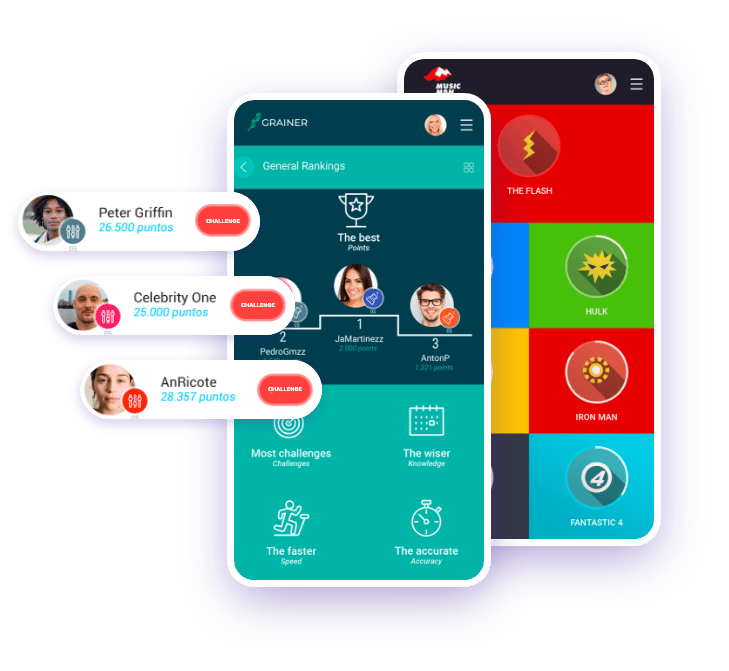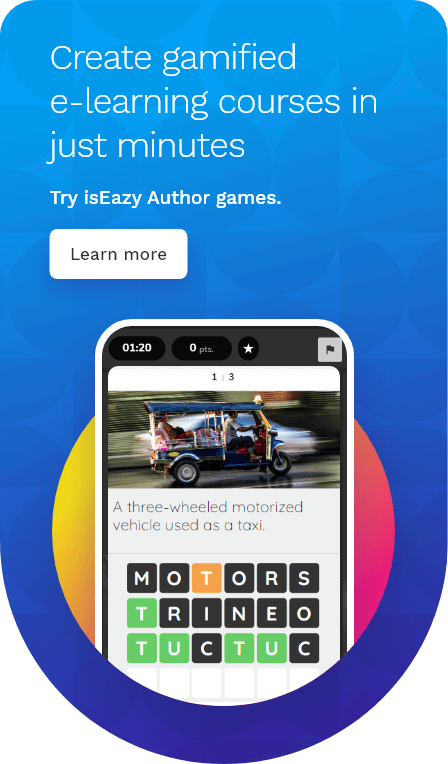Table of contents
ToggleAlthough the phenomenon of gamification is not new, many may still be baffled by the concept of transforming learning into something more like a video game. However, in a world where mobile phones, screens and consoles have an increasing influence over daily life, one thing has become clear: games not only entertain, they also engage. And it’s that process of engagement that represents such a key component in the success of any training program.
In truth, gamification has burst onto the education and e-learning scene with undeniable force. Its ability to transform the way we learn and absorb knowledge is well established, but in order for it to really work, it’s important to integrate certain key components. In this article, we’ll talk you through the elements of gamification that can most enrich the learning experience – and take training to the next level.
The power of gamification in education and e-learning
Gamification has had a profound impact in the field of education and corporate training. In addition to benefits such as improved motivation, engagement and knowledge retention, it has also been shown that it could even help to reduce work stress.
Moreover, a study carried out by KPGM demonstrated that gamified training – featuring dynamics such as challenges and levels, along with instant feedback through points and rewards – can significantly improve employee performance. This evidence highlights the effectiveness of gamification in learning, so next, let’s explore the specific elements that make it so successful.
Fundamental elements of gamification in e-learning
In order for gamification to work successfully within the context of e-learning, it is necessary to integrate three key elements. Let’s take a closer look at each:
Mechanics: Motivating students through points, badges and rewards
Mechanics are the backbone of gamification. These are the most basic components of a game, such as its rules. These mechanics are essentially tools that help involve the user in the experience, such as the setting or game world, or the token or avatar representing the user in that world.
Gamification mechanics also include important elements such as points and level systems designed to keep students consistently engaged and motivated. By awarding points for completing tasks or overcoming challenges, learners experience a sense of achievement, which drives them to keep moving forward.
Dynamics: Engaging users through stories and narrative
Dynamics occupy a particularly important place within the elements of gamification. They are designed to awaken the motivation of users and involve them in the unfolding story or narrative. Gamification dynamics aim to stimulate the student’s interest and encourage them to participate more fully in the learning activity. These interactive stories work by immersing students in a journey through their topic of study, making the learning content significantly more attractive and memorable.
Challenges and rewards are two of the main gamification dynamics you are likely to encounter. Just like video games, achievements can be recorded in a league table, which motivates students to keep improving and surpass the scores of their peers.
Aesthetics: User experience as a key component of gamification
Finally, we have aesthetics – a vital element of gamification. An attractive and user-friendly design goes a long way to enhancing any learning experience. Pleasing graphics, intuitive navigation, and a friendly interface make students feel comfortable and engaged with the content, which naturally improves training effectiveness. Through aesthetics it becomes possible for users to have experiences, reactions and sensations.
How to implement gamification successfully
In addition to the elements of gamification that we’ve considered above, the successful implementation of gamification in e-learning also depends on a well thought-out strategy. We have some final pieces of advice for a smooth integration:
- Design a good strategy from the outset, and make sure that gamification fits the training objectives you have defined, as well as the profile of your students.
- Use the appropriate gamification elements consistently.
- Monitor and evaluate continuously. Track student progress and adjust the gamification process as needed to improve engagement and learning.
- Use an appropriate and specialized tool that makes it easier for you to implement your gamification strategy..
Now you know the elements that make gamification such an effective strategy, are you bold enough to implement it?
Transform your training into a unique experience with isEazy Game, a gamification app that allows your professionals to acquire and reinforce knowledge quickly and effectively, without even realizing it. Through simple question and answer games, challenges, levels, rankings and other gamification dynamics, you’ll reinforce your employees’ achievements and enhance their sense of belonging to their team and to your company. Request a free trial today and multiply your training results x10!















